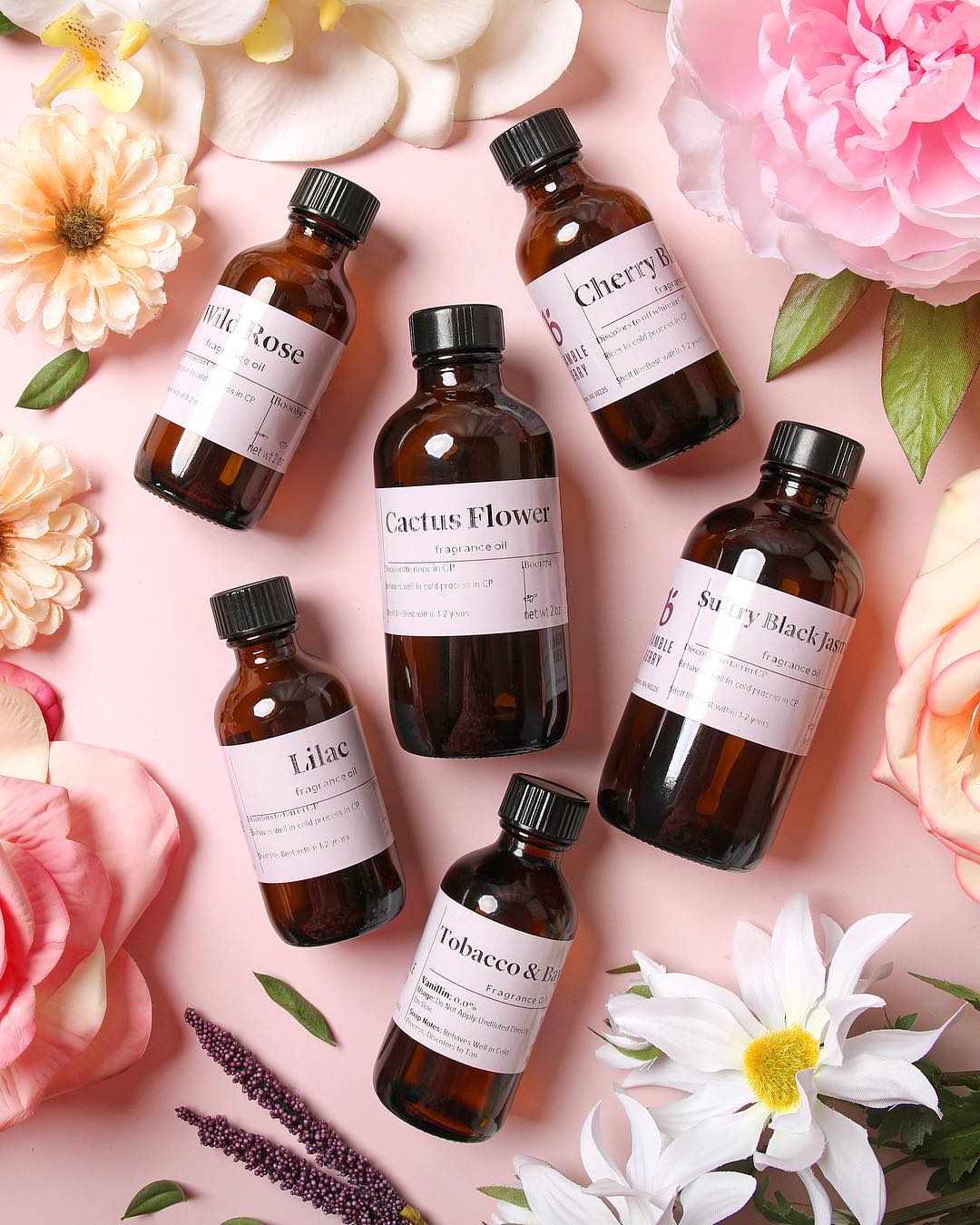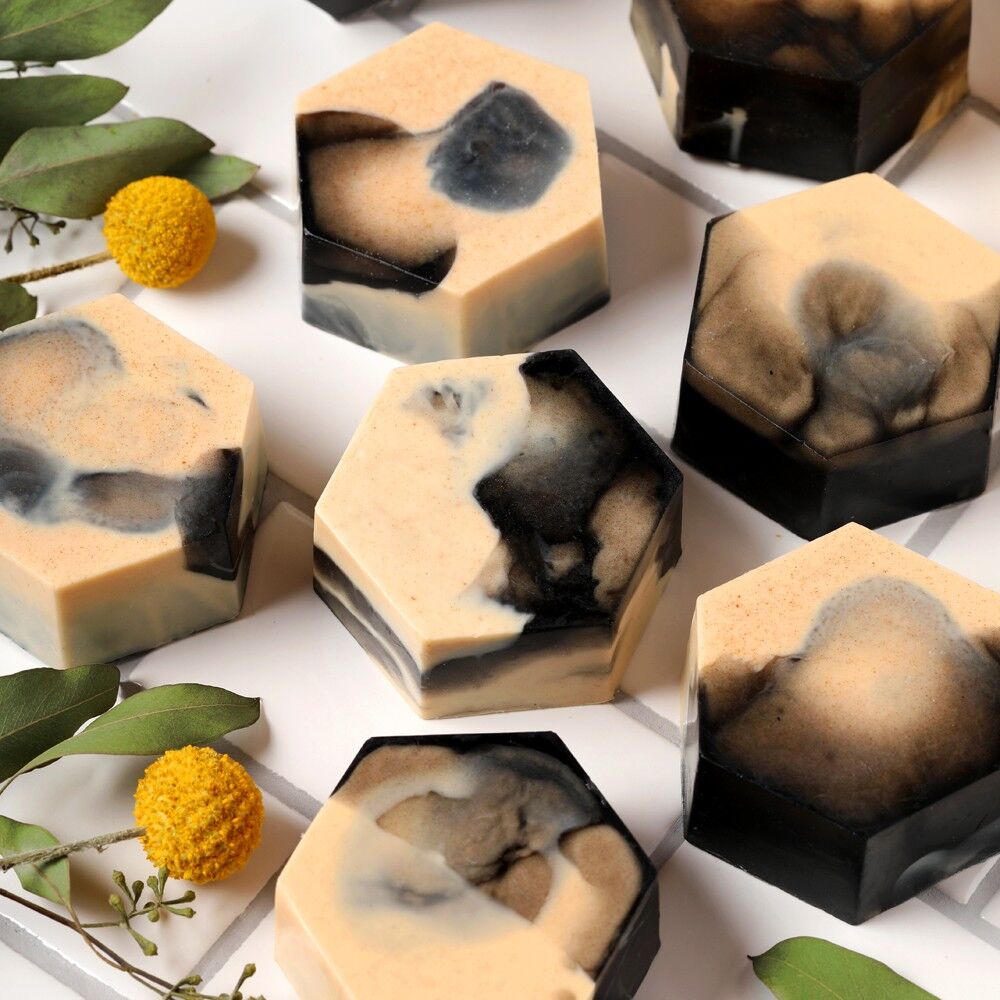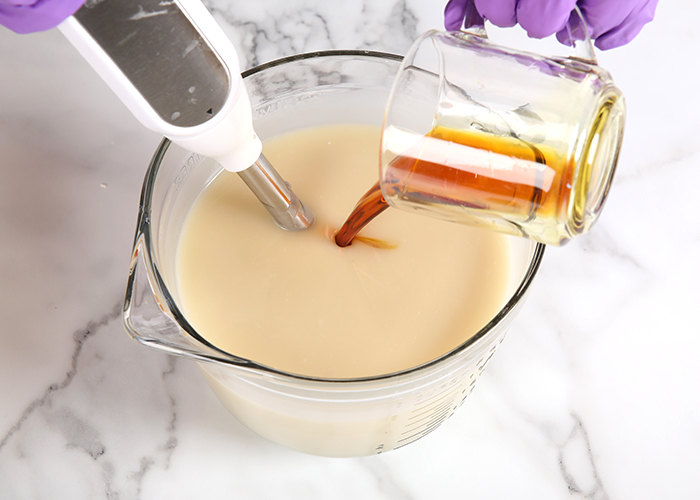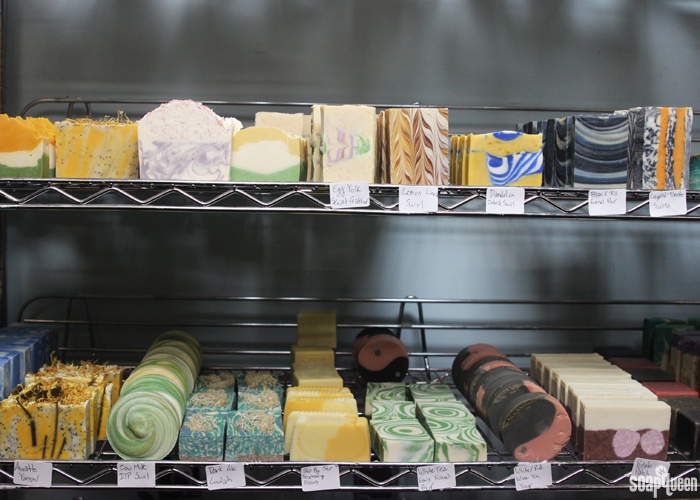
The first time you smell a fragrance out of the bottle is definitely memorable. They can immediately inspire designs, colors, and additives for your next recipe. But if you've ever had that scent fade or change in soap, you know how disappointing it can be.
All Bramble Berry fragrance oils and essential oils are tested to ensure they stick in cold process soap. That being said, there are tips and tricks to make them last even longer.
Fragrance amount
Usage rates play a big role in scent retention. For a strong scent, you can add 0.7 ounces of fragrance or essential oil per pound of cold process soap. For melt and pour, you can add 0.3 ounces per pound. This number will vary based on what oil you choose. For instance, Cherry Almond Fragrance Oil is really strong. The max we recommend is 0.2 ounces per pound of cold process soap. To find out exactly how much you need, check out Bramble Berry’s Fragrance Calculator. Learn more in the Using the Fragrance Calculator article.
The Fragrance Calculator recommendations are based on our testing and safety guidelines created by IFRA (International Fragrance Association) and RIFM (Research Institute for Fragrance Materials). Each one has a maximum usage rate that is deemed safe for bath and beauty products. Using more can cause skin irritation.
Even with the highest recommendation, some scents don’t make it through. Cold process is a harsh environment, as it goes through several pH changes. Straight coconut fragrances and citrus essential oils like lemon tend to fade. The good news is you can still use them for melt and pour soap, scrub, etc. Lemon essential oil adds a crisp scent to this Marbled Melt and Pour Soap.

Anchoring
For cold process, try some of our blends like Coconut Mango Fragrance Oil, Coconut Citrus Sorbet Fragrance Oil, Lime Fragrance Oil, and Pink Grapefruit Fragrance Oil. Super concentrated orange 10X essential oil is a good option too. They're specifically formulated to last in soap.
You can also make your own - it's called anchoring. That involves pairing lighter scents with a deeper, earthier, or more complex scent to “anchor” them in soap. Try Amber Fragrance Oil, Ginger Patchouli Fragrance Oil, or Sensuous Sandalwood Fragrance Oil. In the Bentonite Clay Soap, we anchored lime essential oil with earthy patchouli essential oil to help it stick.

Clay
Some makers like to use kaolin clay to help with scent retention. The theory is that it holds onto the fragrance or essential oil and makes it last. While we haven’t done a lot of testing on this theory, we have found kaolin clay adds a nice slip and subtle color to soap. Learn more in Which Clay is Right for Your Skin?
Temperature
Each fragrance and essential oil has a flashpoint. It's used to determine shipping restrictions - if the oil is heated to the flashpoint and it comes in contact with an open flame, it can ignite. Some makers also believe if a scent is heated to that point it can burn off and fade.
We haven’t noticed substantial fading at higher temperatures, but it is something to take into consideration. If you’re using a low flashpoint scent, you can use lower temperatures and avoid gel phase to be extra careful. If you make hot process soap, you may want to stick to high flashpoint oils.
Storage
To ensure the scent stays strong, cure soap in a cool, dry place out of direct sunlight. Learn more in the How to Store Handmade Bath Products article. You can also dip a cotton ball or balled up paper towel in the fragrance oil and place it by the soap while it’s curing. That's thought to help the bars absorb some of the scent as it cures. Just remember that fragrance oils and plastic do not get along, so be sure your cotton ball is not sitting on a plastic surface.

For the best results, make sure the fragrance you’re using has been tested thoroughly and approved for use in soap. We test all of our fragrance and essential oils and include performance notes in the descriptions. From there, experiment with blending and usage rates until you find the best option for your recipes!
Find DIY bath and body projects here!

